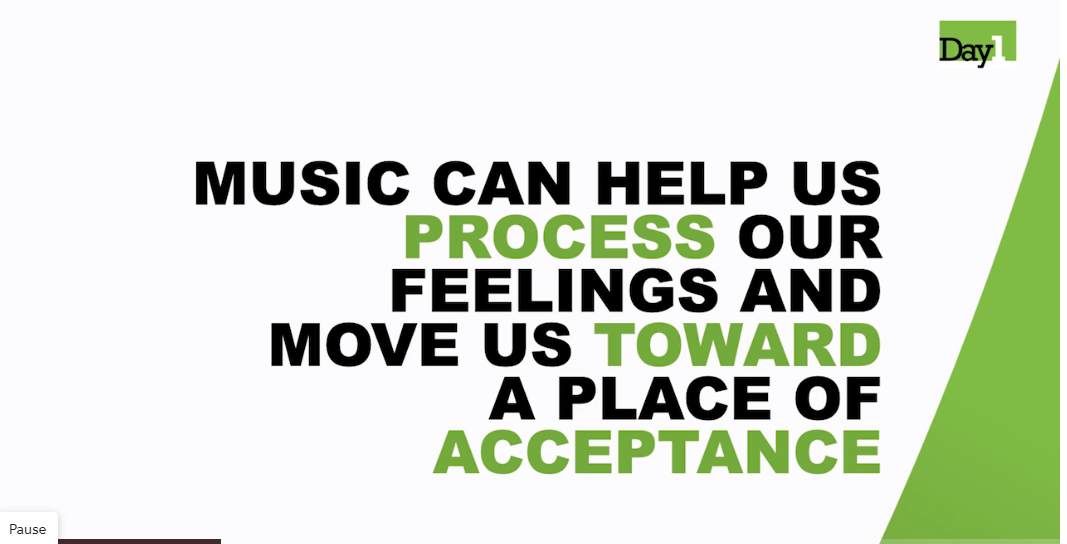Podcast: How to Survive & Thrive Through M&A with Tim Hughes
Jennifer joins Timothy Hughes on #TimTalk to dive into mergers and acquisitions and how you can survive if you get caught up in one.
In her book “Now What – A survivor’s guide for thriving through mergers and acquisitions” she talks about the fact that M&A happen, you can be going along nicely in your career and then you get hit with the change and upheaval that M&A provides. So, what will you do?
They also discuss the 5 stages of grief that people go through from denial to acceptance and the stages in between, and the post-M&A characters you will come across.
From Denial to Acceptance: Music to Get You Through
After all of the business transitions over my career, I’ve learned one key thing: to embrace change, you have to get out of denial. It’s the key to acceptance.
To help you on your own path to acceptance, I’m sharing my Spotify Playlist, From Denial to Acceptance. Fear not, it’s got everything from R.E.M. and Adele to Frank Sinatra and the Rolling Stones.
Grief and Running Your Business During Covid-19
Jennifer Vondrevey & Diana Wu David
Around the world, we are collectively grieving. No matter what stage we are at in our fight against this pandemic, we are all grieving virtually together and yet in isolation, with our neighbors, within our communities, as a nation — as a world. You don’t need face-to-face contact to appreciate that people are coming to the realization that our way of life and business will never go back to the way it was.
What if, during this, you also lost a loved one? How do you grieve your loss when you are in the middle of a pandemic? Especially when the future of your business seems to be tottering on the brink?
This is not a theoretical question for the two of us. Diana lost both of her parents this past February, and Jennifer lost her mother in March. Grief is already complex, but how do you mourn when the world around you is falling apart, and your business seems to be dissolving right along with it? How long can you entertain pulling back, when the business you worked so hard to create will remain at a standstill until you do something to move it forward? When you are not even sure what that way forward is?
The joy and the heartache of being a sole proprietor is that everything rests on you. Your product, your intellectual capital, is trapped in your brain. Delegation is not as easy (read: impossible). Extended time off is a luxury you have rarely been able to afford if you wanted your business to grow. Even time off for grief seems like something you can’t or shouldn’t consider.
There is nothing like a global pandemic to level the playing field. The reality — everyone is figuring this out all at the same time. NO ONE has gone through a pandemic like this, and knows what to do. The other thing to keep in mind: You are not alone. Consider the hundreds of thousands of people we have lost worldwide during this pandemic. There is a mass grieving right now for a way of life and people lost. Thousands of people feel the way you do and are struggling.
As we both stair-step our way back into the real world (at least what real looks like today), we wanted to share five steps we have taken, and continue to take, to give us the space and time to heal, while keeping our business moving forward.
Step One: Give yourself permission to grieve. Tame the guilt beast — the guilt you feel every time you are doing one thing and feel like you should be doing another thing. You will always feel like you should and could be doing more for your business. Do the things that will help your business but will allow you to stay in your pajamas for the times you can’t get out of bed. Find actions that won’t require you to engage too much with the outside world. Because you may need to social distance from the world right now.
Be open about the fact that you are grieving. As solopreneurs, we feel the need to exude confidence and strength with every engagement. The new normal sees people sharing of themselves, their fears and anxieties, more openly. Grief — a subject that might have been considered taboo in the workplace earlier — is now being shared openly because we are experiencing a mass, worldwide grief. Jennifer, for example, posted a tribute to her mom on LinkedIn, a very business-oriented platform. By tying it to the values she learned that helped her succeed, she honored her mom and could also signal what she was going through.
Step Two: Pause and assess your business objectives and strategies. What do you want your business to look like moving forward or once we get on the “other side of this”? Perhaps you decide you want the business to stay the same yet readjust certain offerings given the expected shift in people’s perspective. Or you may determine that you need to create additional revenue streams, like an online course, and decide to proactively make that happen. The key is to take this time to think about your business and where you want to take it. Often as solopreneurs we are running, running, running. Take the time now to pause and consider your business’s mission and purpose and how the external environment changes how you can deliver on your promise to your clients. Fellow solopreneur Jenny Blake, author of Pivot: The Only Move That Matters Is Your Next One, shared this thought: “You don’t want to pivot just to pivot. Whatever you do should align with what the purpose of your business has always been.” Take the time now to think and hear your own voice.
Step Three: Focus on your business fundamentals. As solopreneurs, we are so focused on business development and securing the next big customer or project that we don’t carve out time to focus on our fundamentals. We fail to make time to reflect on simplifying processes or fixing the part of our business that has bothered us forever. That task could range from reviewing our marketing materials or website to the mundane, like our database. How often have you thought to yourself “I should really scrub my data”? Likely a number of times. And yet this can be a time-consuming effort best done with no distractions.
This is a perfect activity to do now. Organize your data. Who are your first- and second-tier clients and prospects? How can you serve them now? As sole proprietors, we have a tendency to want to keep casting a wider net to catch more fish for our business. Work with the fish you’ve got and organize how you will engage with them when the time is right. This focused effort will make you smarter about your current clients and prospects. It’s productive isolated time.
Step Four: Mine your existing relationships, both client and community. Once you have done that data scrubbing, you may be surprised at how many clients you have served who could be interested in working with you again. Right now, people are craving certainty. You are a known commodity. Consider how you might work with them again. Maybe the Part II to your workshop, enhanced with new takeaways based on what we are experiencing now? Or a project that you could tailor to another group within their company? There are likely many possibilities to work with people who know and like you. Consider what those opportunities could be so you can act on them when you are ready to reach out.
Think about the people in your network. As entrepreneurs, you likely have many people you turn to for advice and guidance–your community of trusted advisers or virtual board. This article is a perfect example of what can result when you reach out within your community. Diana and I know each other from a recognized expert community and had been sharing advice on how to balance our grief and business needs. We determined we should share the advice we gave each other more broadly. Et voilà.
Step Five: Double down on the skills you have gotten good at as an entrepreneur.
“There is nothing quite so daunting as the steep learning curve that comes with life’s most critical times … that leave us feeling profoundly ill-equipped and incompetent,” say grief experts Dr. Kelsey Crowe and Emily McDowell in their book There is No Good Card for This:What to Say and Do When Life Is Scary, Awful, and Unfair to People You Love.
Though you may feel out of your depth because of recent circumstances, have faith that the skills you have developed as an entrepreneur are exactly what you need right now. Prioritize ruthlessly to eliminate unproductive activities. Now is the time to eliminate aspects of your business that deliver lower value (remember the 80/20 rule?) or are no longer viable in the pandemic. Diana had workshops and speaking engagements booked throughout the year that have been cancelled because of Covid-19. She pivoted to calling people one-to-one for her coaching and courses, and has found out that she likely did too many engagements versus the value and revenue they delivered. Dust off your project management skills.
Solopreneurs can juggle multiple tasks better than most. Chunk your work to make sure you can write articles in the morning, switch to funeral arrangements over lunch, and then go back to cleaning up the database. This will minimize the overwhelm of the vastly different tasks you now have on your plate. Finally, be honest and authentic. Many of us got into being our own boss to bring our whole selves to work. Frank conversations with your clients and team about your plans to deal with the loss and continue your business can clear the air and let people step in to help if you need them to.
We know what it’s like to wake up in the morning after a death in the family. We have felt that sinking feeling when your business continuity plan requires you to get out of bed at a time when that feels impossible. But waiting to engage is like jumping on the treadmill while it’s moving. Your grief will dissipate over time. Following these steps to move your business forward can help you “return to work” in a way that is less overwhelming and will make your business stronger than ever.



